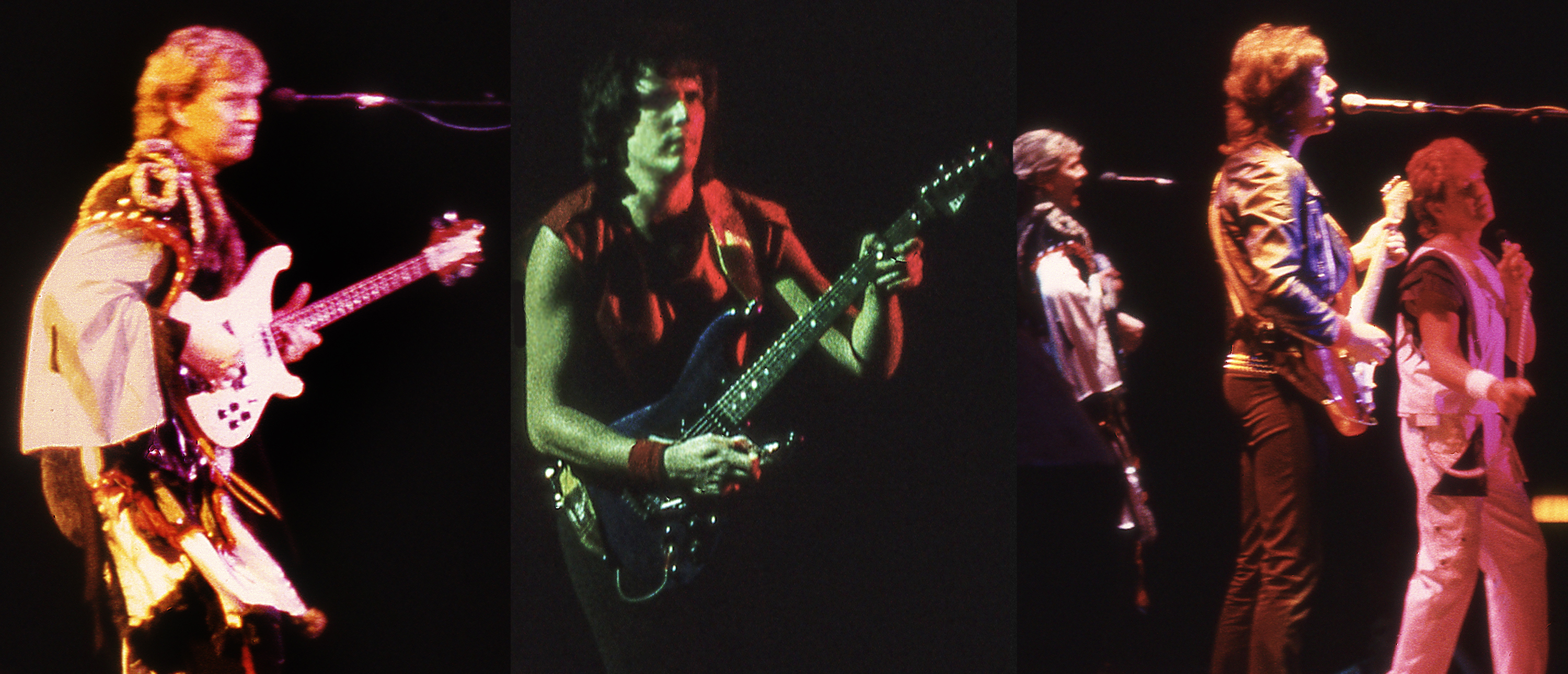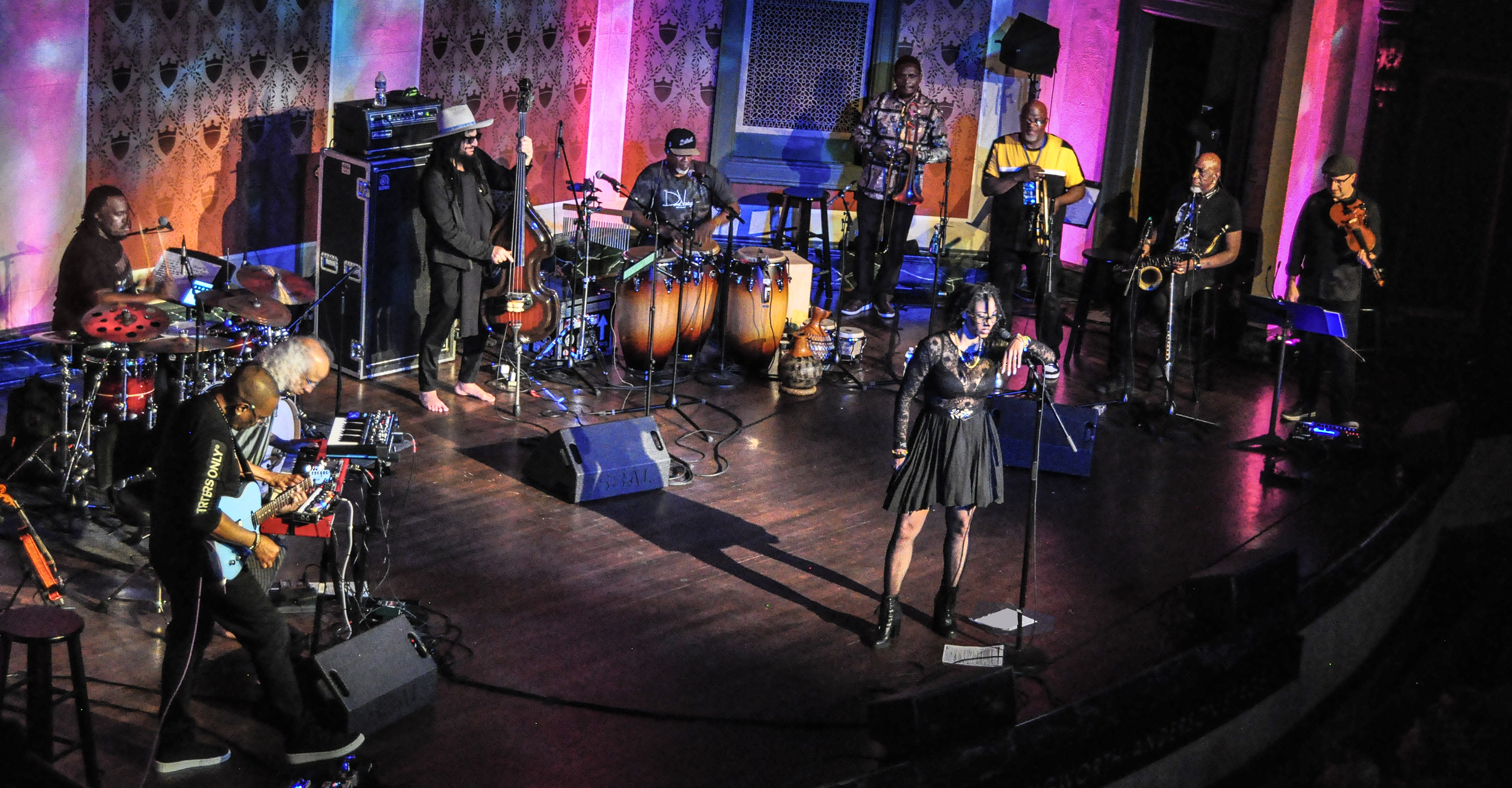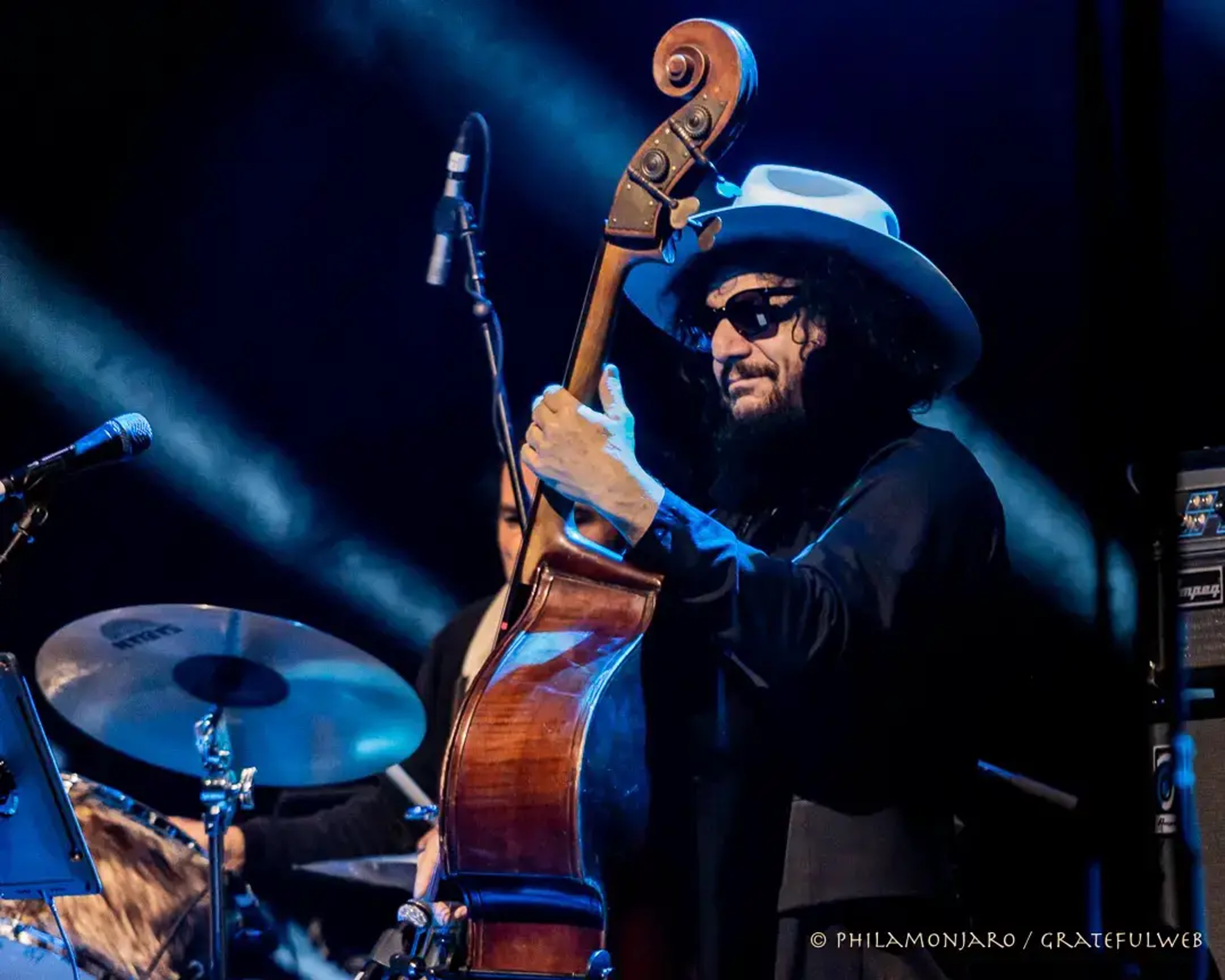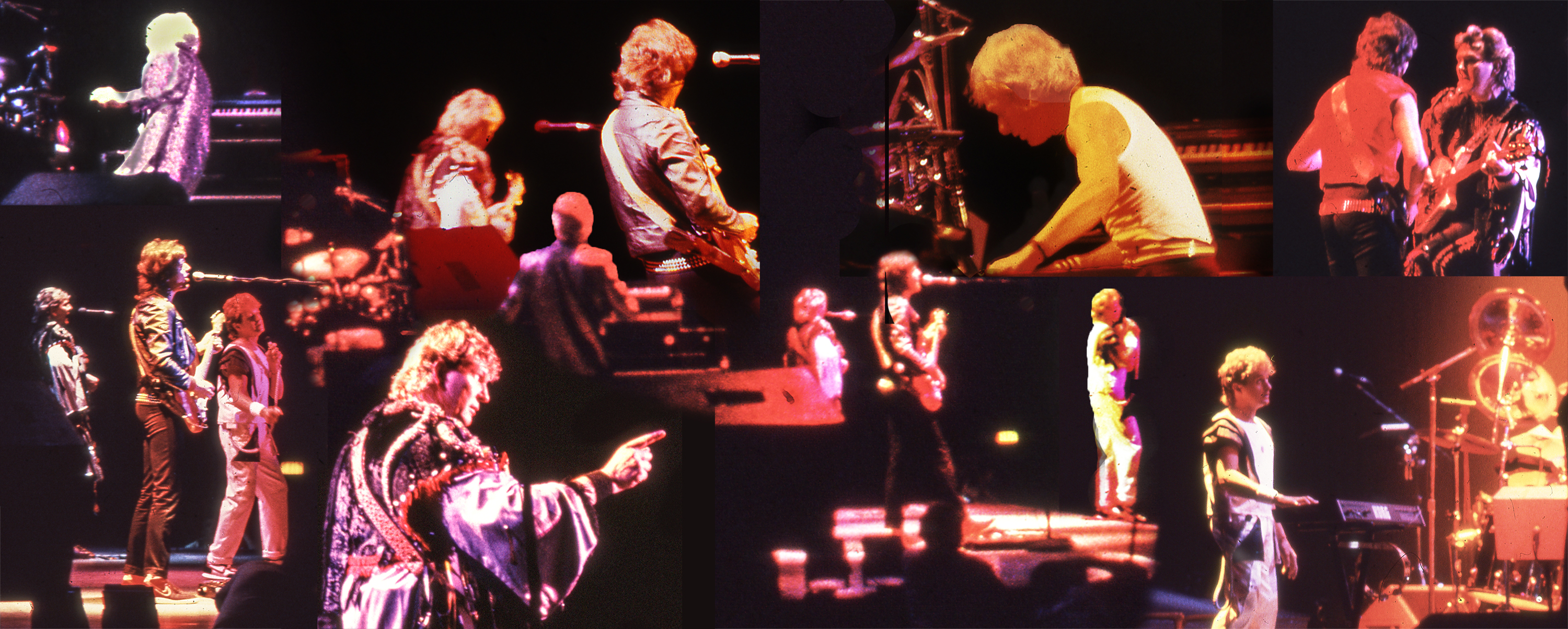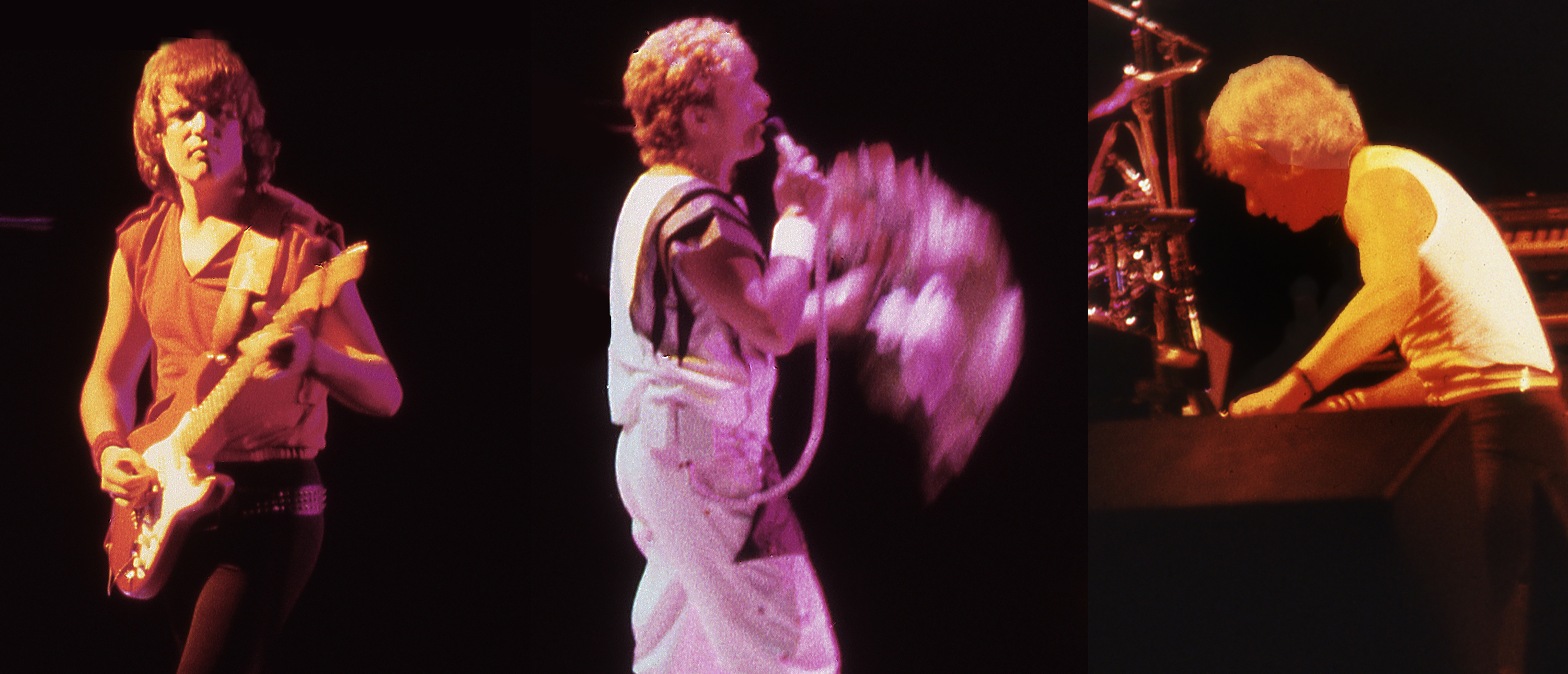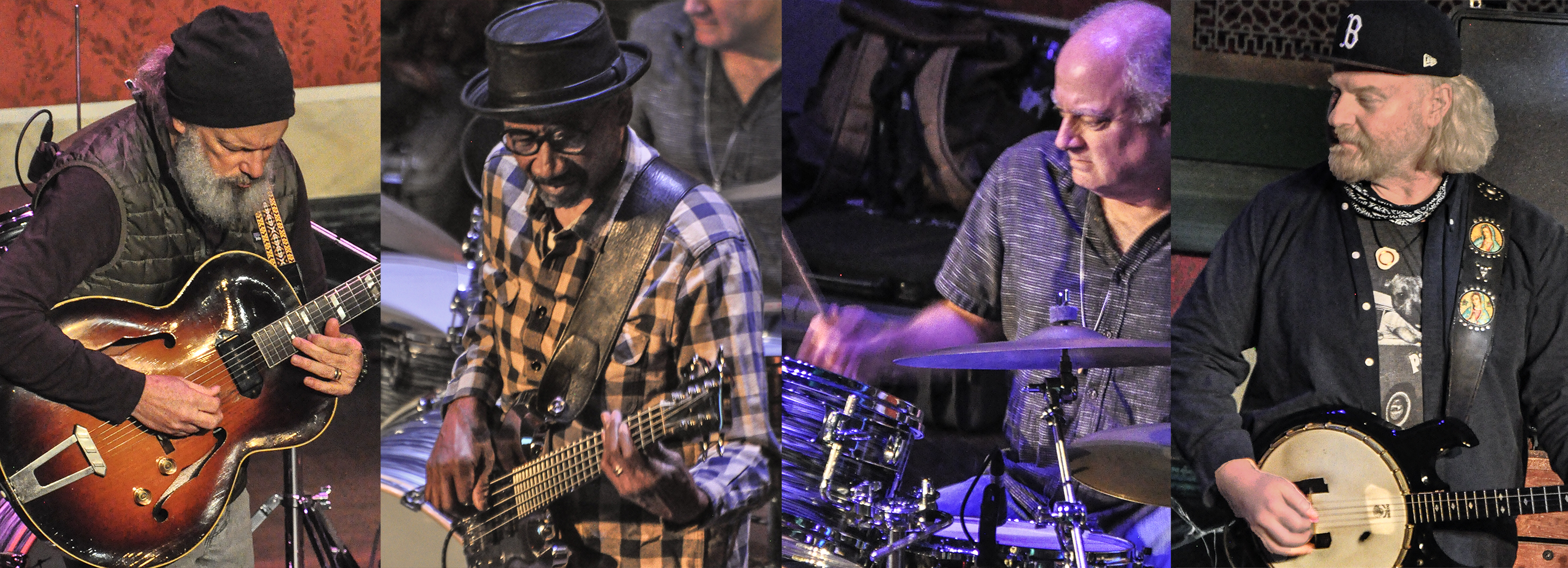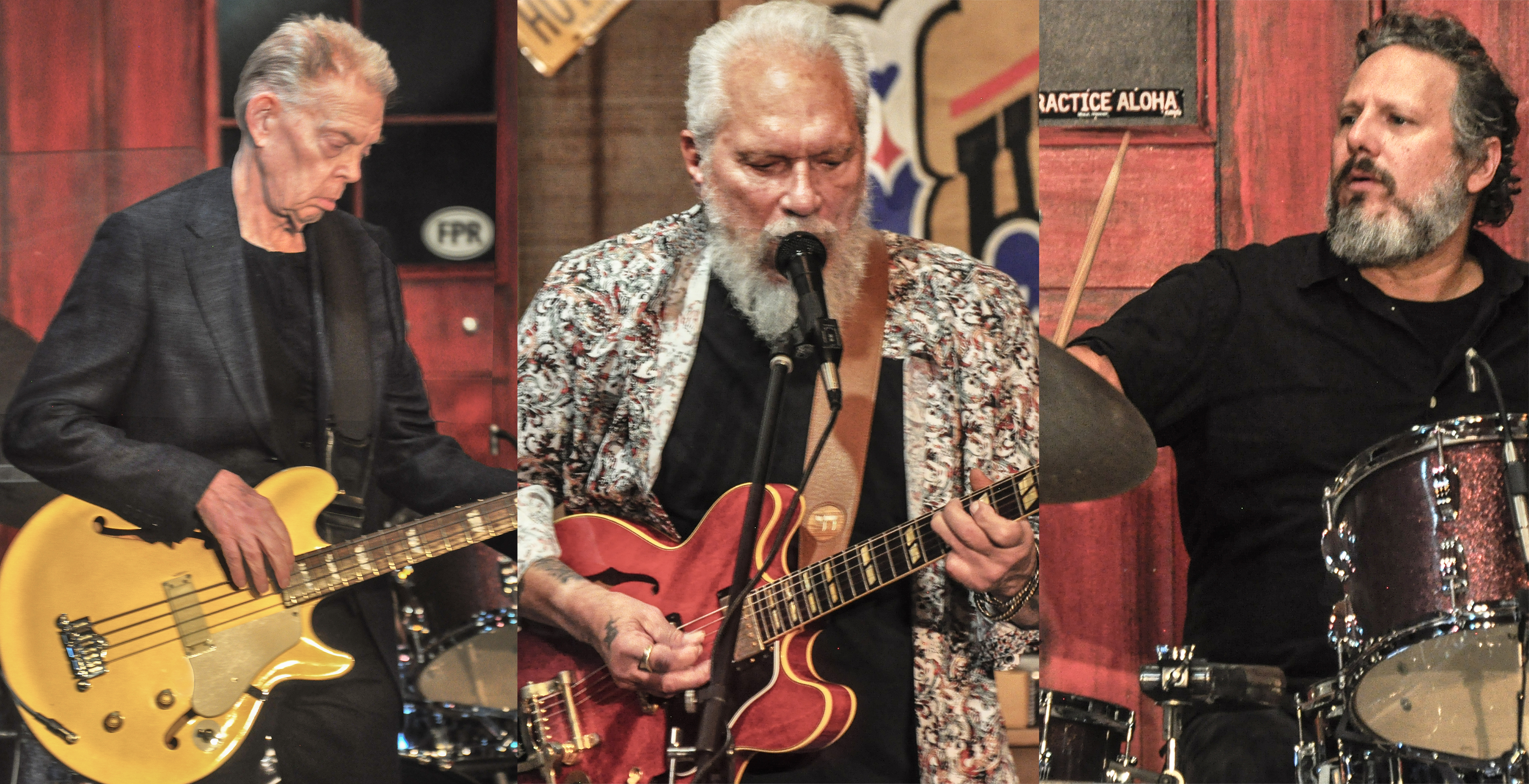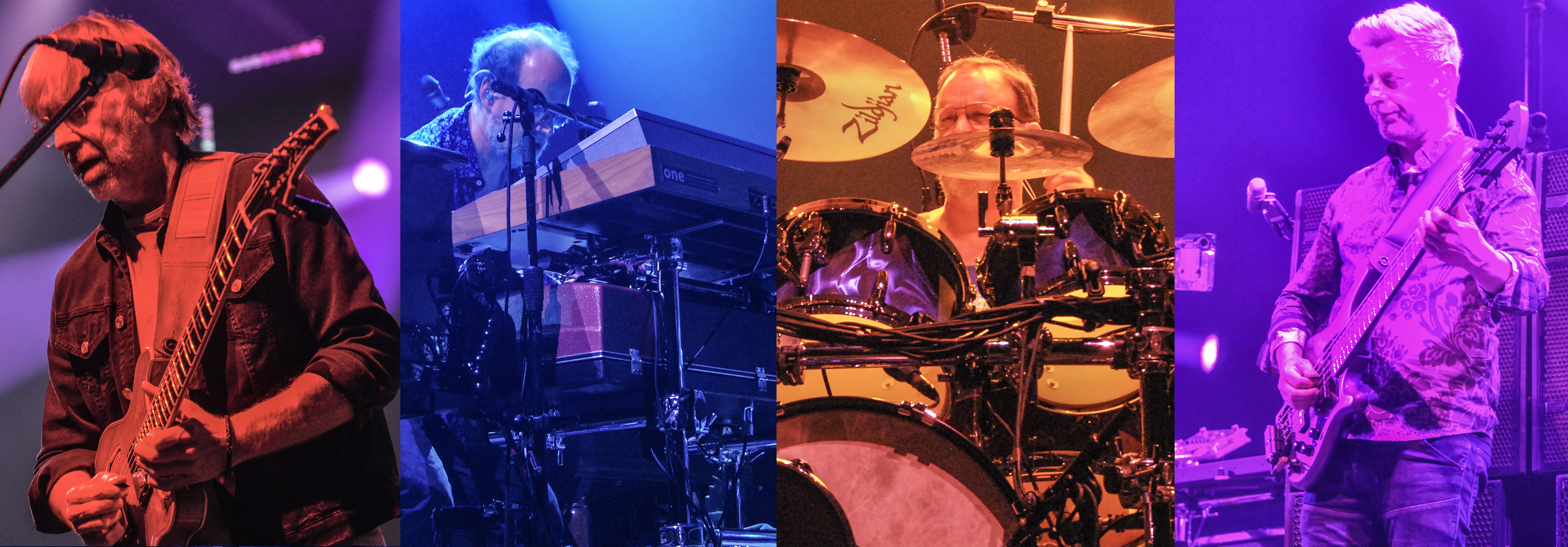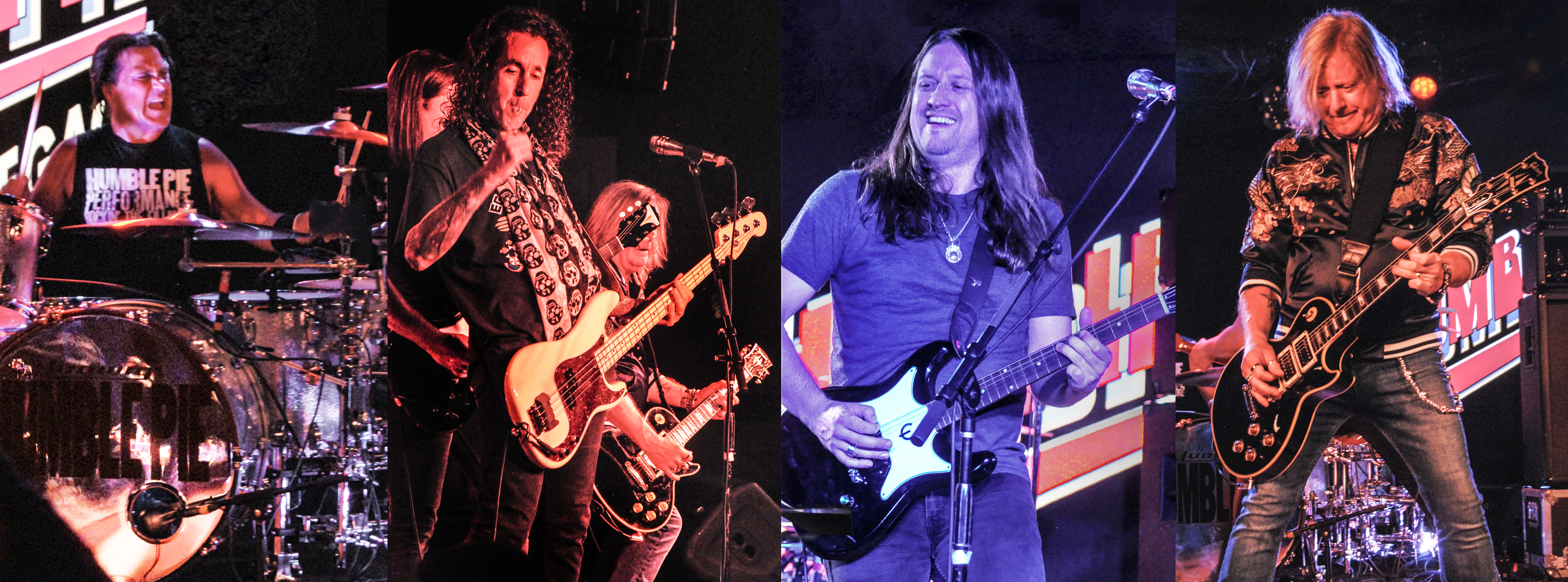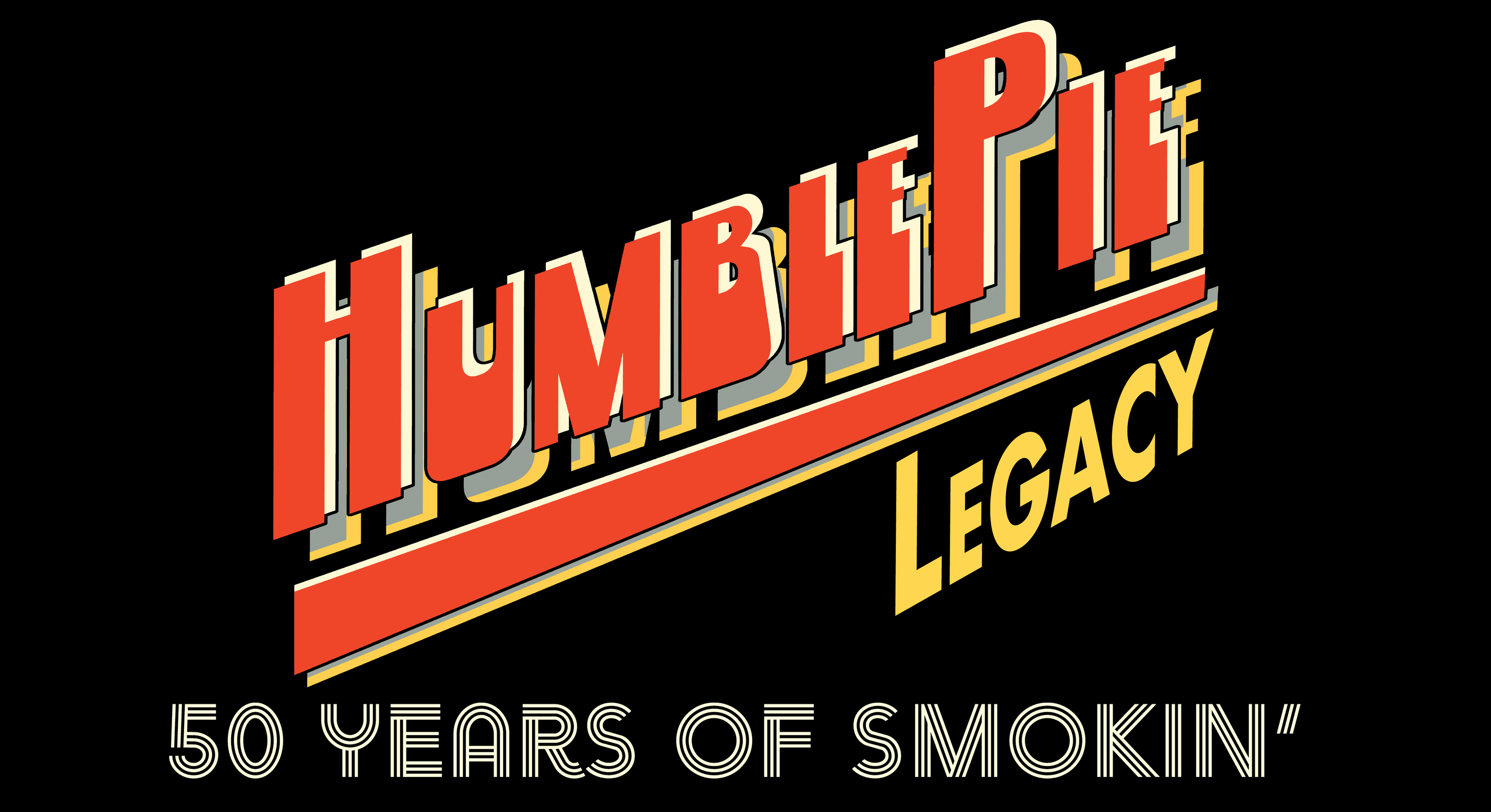That first impression was a stunner. There were the grunge-y, arena-rock power chords, the cracking drum rolls and the glitzy, sampled horn accents at the ends of those hanging sustains. And then, the sudden appearance of Jon Anderson’s singular, near-angelic, alto tenor.
“Move yourself/You always live your life/Never thinking of the future. . .”, he sang, his voice spiking out of the radio.
Of course, I knew it was Anderson’s stimulating voice, but what was that song with the squawky, laughter-like lead-guitar fills that bounced madly from speaker to speaker? The DJ, who had come on right after the song to back-announce it, answered that question for us when he said it was a new release from Yes. This then-brand-new single, making its FM radio debut in October of 1983, was “Owner of a Lonely Heart”, and to many ears – not only mine – the envelope-pushing British progressive rock band had never sounded like this.
For better or worse, from their 1969 arrival on the scene through their rapid and oft-criticized stylistic evolution toward ever greater musically-assured destruction, Yes had ‘established’ themselves – heh! – as a ceaselessly rotating five-man marriage of musical prodigies.
For example, legendary lead vocalist Anderson himself had been conspicuously absent from the 1980 Yes album, Drama. So this realization of his return to the Yes brand and this stunning new sound were quite the shocks. And the album that the band was about to deliver in November 1983 – with the spritely singer back in the fold and cheekily named 90125 after its Atco Records catalog number – would follow this new spirit and reshuffle the decks of many a fan and non-fan alike.
“As we cross from side to side/we hear the total mass retain. . .”
With self-assigned fervor, Yes had most of all prided themselves on compositions of epic length, fire-hose technical prowess and breathtakingly wide dynamic range. And thanks to Anderson’s idiosyncratic approach to lyric writing, Yes’ songs also carried a deeply romantic and fantasy-based worldview, often-conveyed through baffling wordplay. (And their album cover art up to 1980 had increasingly locked in that visual aura of surrealism and Tolkien-like, elfin fantasy.)
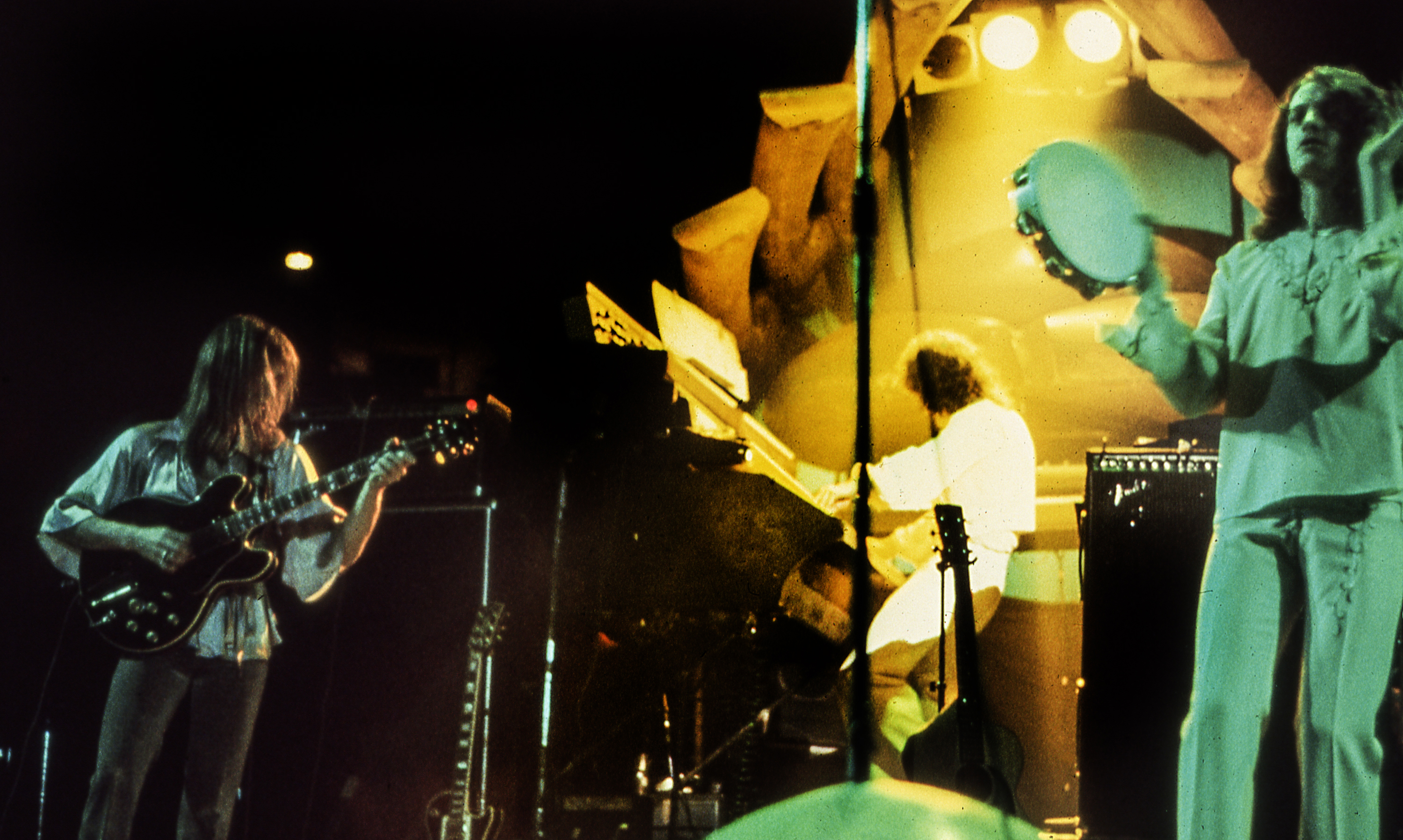
One critic from back in the day even once described Anderson’s cosmic wordles as “the mystical fringe.” The more withering British slang term airy-fairy or the all-purpose putdown psychobabble could just as easily apply. And, after a brief infatuation with the band in the early ‘70s myself, I quickly turned to mocking them for that same curious tendency.
Save for Anderson’s unmistakable singing voice, “Owner of a Lonely Heart” – at my first hearing on FM rock radio – barely had anything in common with that fringe-y Yes of old. That single was groovier, punchier and rawkier than even their transitional, pop-tinged Drama album in 1980. Crucially, this new song was also more danceable, and there would be many remixes of it to come that would take advantage of this very fact and help to boost its success.
For sure, even after the partial re-jiggering of Yes’ sound in the Drama era, in 1980, it still would take more time and creative side trips for core Yes members to arrive at the crafting of this true breakthrough. But break they did. With music and lyrics that were much more stripped-down and comprehensible than many classic Yes songs, the single “Owner” had done the seemingly impossible and become the most instantly accessible song in the band’s history.
“I still remember the dream there. . .”
It may be hard to believe that 40 years have passed since the arrival of 90125, an event which both marked the biggest commercial crossover success of Yes' career and, truly, their final foray into breaking new creative ground.
As with other legacy prog bands – think Genesis and Pink Floyd – who had weathered turbulent changes in the music industry in the 1980s in their own dogged ways to achieve new levels of popularity, Yes were hugely successful in attracting armies of new listeners with 90125. And riding on the wave of new exposure afforded by heavy rotation of music videos on the then-revolutionary MTV cable music channel in the mid-1980s, Yes punched through like never before to a much wider worldwide audience.
On the back of that head-turning lead single, sales of 90125 were phenomenal, with the album coming in at #5 on the U.S. Billboard 200 while reaching # 16 on the UK album chart. And, of course, “Owner” itself ranked high in many of the world’s Top 20 singles lists at the time. The song made it to #1 in the U.S., for two weeks in January 1984, although oddly enough it actually did come up short in the UK market at only #28.
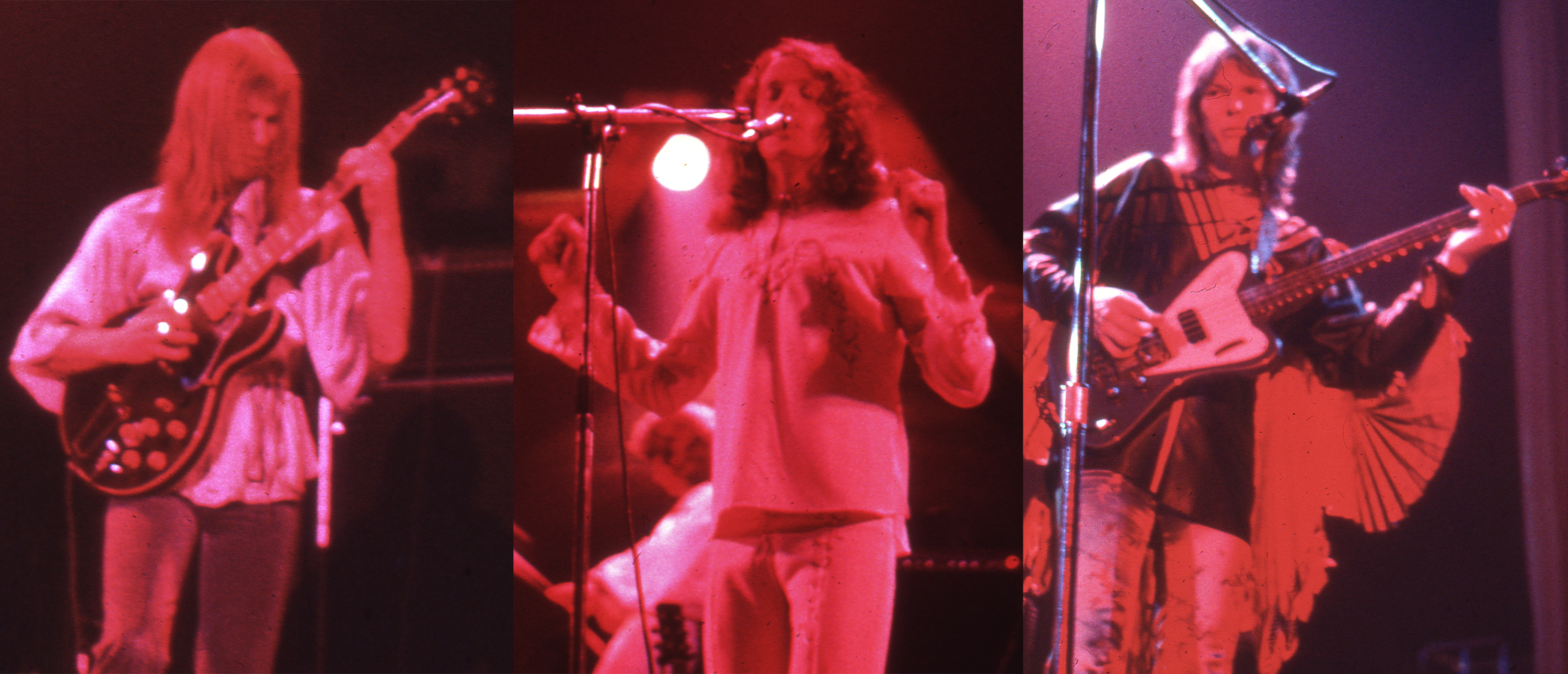
Of the entire Yes catalogue, 90125 has remained the band’s best selling album (out of 23 studio albums released – and 90125 was # 11) with more than 3 million copies sold worldwide. It’s also worth noting that the 2:09-minute-length prog blowout album track “Cinema” – tucked into the middle of the album’s nine tracks – nabbed the group a 1985 Grammy Award for Best Rock Instrumental Performance. Nice work by anyone’s standards, especially for such an unlikely and divisive prog outfit like Yes, and such an unlikely song at that. Those Grammy people really are a silly bunch, doncha think?
But in late 1983, when 90125 arrived on record store shelves, none of that brain-popping success had been guaranteed. Downside first, the album proved to be a jumping-off point for some older fans who had been wet-nursed by the artier, more self-indulgent versions of the band. To them, the more compact songs and shimmer of 90125 smacked of “sell-out” and so – even with Anderson back on vocals – some of them inevitably turned away, feeling that Yes had seemingly abandoned their patented orchestral juggernaut style.
But then comes the upside: For music fans like me – thoroughly repelled by those conceptual excesses and always seeking more direct and emotionally resonant music – the many stylistic innovations of this more ‘80s-friendly album were welcome winds of change. (Truth is, I’ve always had low tolerance for the orchestral pretensions of keyboardist Rick Wakeman.) So “Owner” – and other 90125 songs soon to follow it in heavy rotation on FM radio – definitely changed my mind about them and won me back.
Then, of course, there were all those new, first-time fans discovering Yes as if they really were custom-made for the 1980s radio mix alongside fellow artists like The Cars, Talking Heads, Eurythmics and The Police. And – an added scoop of enjoyment for me – there was the much-ballyhooed return of original Hammond organ slinger Tony Kaye, who had left the band in 1971 shortly after their first burst of fame. His surprise return 12 years later gave me a poetic sense of closure. “Ahhhh,” I remember saying with a satisfied smile at the time. “Now that’s more like it.”
“You’ll see perpetual change. . .”
Historically, the tale of Yes – right to the present day – is truly one of intense internal competition, score-keeping (and settling) and perpetual personnel changes. And 90125 was the fruition of a roughly-five-year period of exactly that kind of creative turmoil.
There had been so many changes from 1978 to 1981 that the band had fractured completely, with even founding member and bassist Chris Squire and second-round Yes drummer Alan White leaving to pursue a very promising, non-Yes alternative for a brief time. So the conception and birth of 90125 – with that duo once again laying down the chunky rhythmic foundation – were not the predictable outgrowth of the band’s previous trend. In fact, the band underwent a complete reinvention.
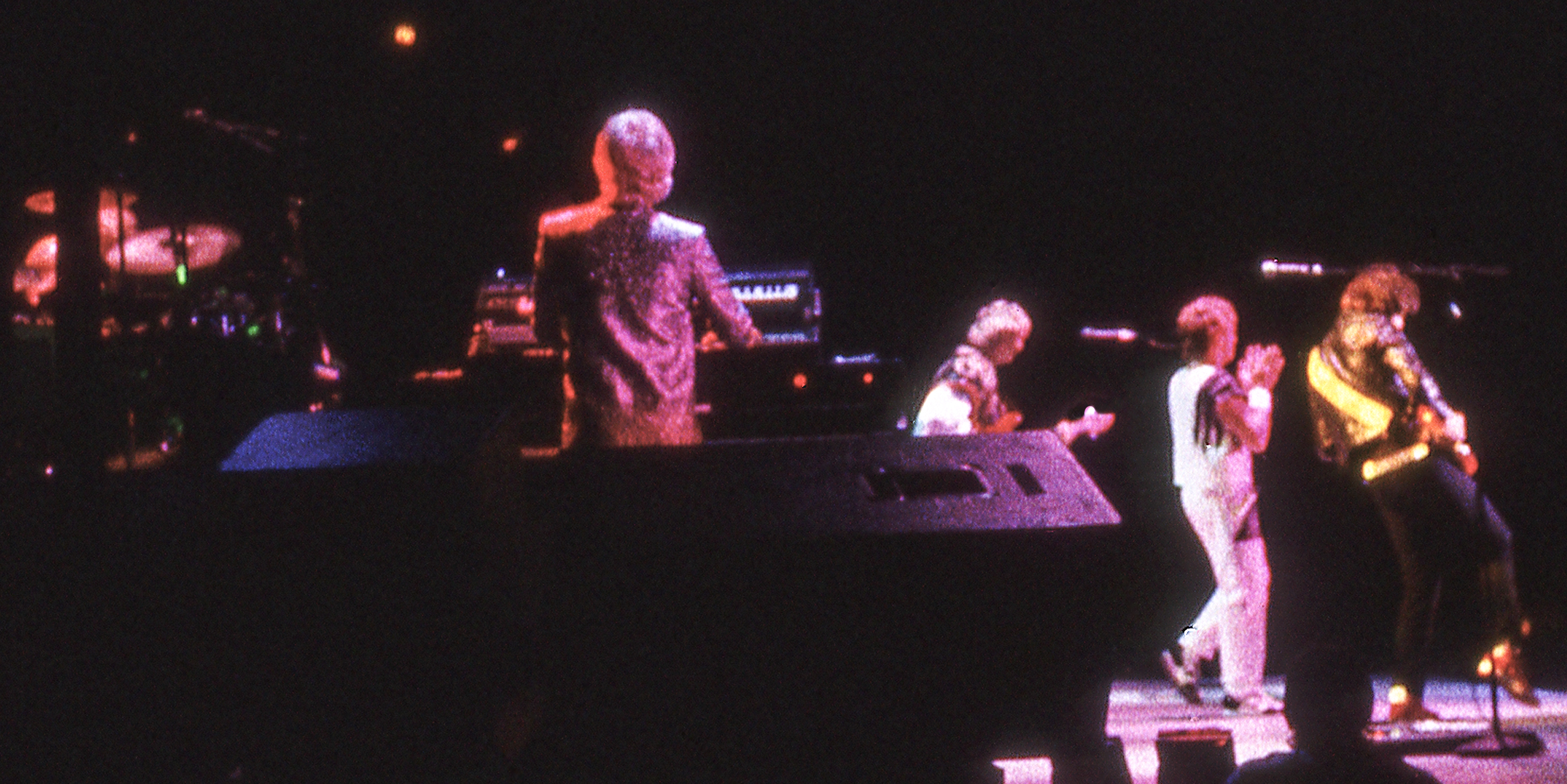
We now know that assorted fragments of previous versions of Yes found their way back together with 90125. (Four previous members were back in the stable, and three were even veterans of the original five-man line-up.) But this re-birth followed a twisted and unforeseen path, and how different things might have been – for both some former band members and their musical history – if Squire’s and White’s exploratory, post-Drama project had survived.
In those doldrum years immediately following the last album with Jon Anderson and Rick Wakeman (1978’s Tormato), the band struggled through one of their roughest passages. Those two pivotal members had left in dispute in the early stages of Drama in 1980, and the quintet suddenly found themselves busted into a trio. With an album and tour both at stake, that obviously wouldn’t do.
A temporary new line-up had filled those gaps in with vocalist Trevor Horn and keyboardist Geoff Downes – both from the new-wave pop group The Buggles – for that one album and follow-on tour. Some of that turn-of-the-decade freshness in Yes’ sound at that time – which included hints of reggae and other trendy sounds, plus a move away from longer and more ponderous keyboard passages – quite likely had come from their contributions.
In 1981, however, after their decidedly underwhelming Drama tour, Yes had disintegrated completely, with Horn out as singer, Squire and White off to their new experimental group, and classic Yes lead guitarist Steve Howe and keyboardist Downes free to follow their own pursuits.
In short order, the guitarist and keyboardist landed well in the new Asia project with former King Crimson bassist John Wetton and ELP drummer Carl Palmer, while Horn was happy to move into full-time production work. (His embrace of innovative technologies and groundbreaking production techniques soon earned him the fitting title of “The Man Who Invented the ‘80s”.) Only Squire and White – now without a record contract – seemed to be on shakier ground. But they weren’t all that worried yet. Their new start-up project with the mythical guitar maestro of Led Zeppelin, Jimmy Page, had the potential of solving all their problems.
There was, of course, some early, friendly jamming with Page that had lifted everyone’s spirits. (Page himself was still coming back to life from the untimely death of his Zep bandmate, drummer John Bonham, in 1980, and the ending of their band.) The three re-animated musicians soon began rehearsals. This quickly led to recording and even a band name: XYZ – short for Ex-Yes and Zeppelin.
A fourth partner – keyboardist Dave Lawson – soon came on and together they had evidently worked up a head of steam. Word inevitably leaked out of the inner circle, and they soon found themselves being heralded as the next supergroup. But the jester held another deck of cards, as those all-too-typical factors of creative dissent and record-label conflicts soon kinked their plans, and Page was suddenly ‘out through the in door’. So, in spite of a promising beginning with the Zep guitarist, “Fish” and White had found themselves dead in the water again.
As luck would have it, a few intriguing but gritty, in-progress instrumental XYZ recordings were captured. (Curious music trollers can easily find three of these out in the wiggy world of YouTube.) Rumors of Page possibly giving his blessing to the official release of these recordings are as perennial as May flowers, but, for now, all we have are those three low-fi relics.
It must be said that, to any fans of heavy rock and prog, those clips offer an audio glimpse at what might have been. And, as drummer White has hinted, 90125 was still possibly laced with some of that magical, experimental DNA – if not any exact musical blueprints – from XYZ. So Squire and White at least came away from the experience with a heightened thirst for something new. And so, at the end of 1981, the duo quickly recorded a somewhat unlikely Christmas-time pop single, “Run with the Fox”, and put a new calendar on the wall.
“Wait! Maybe the answer’s looking for you. . .”
There were a certain key players in the development and perfecting of 90125 who warrant special mention here. The first of these would be – without even saying it – Chris Squire himself, who remained the fusion reactor of Yes’ perpetual motion machine through all of their incarnations, from 1968 to his unexpected death in 2015. Like the “Fish” he was, he kept swimming, kept writing, kept playing until he found more favorable creative waters.
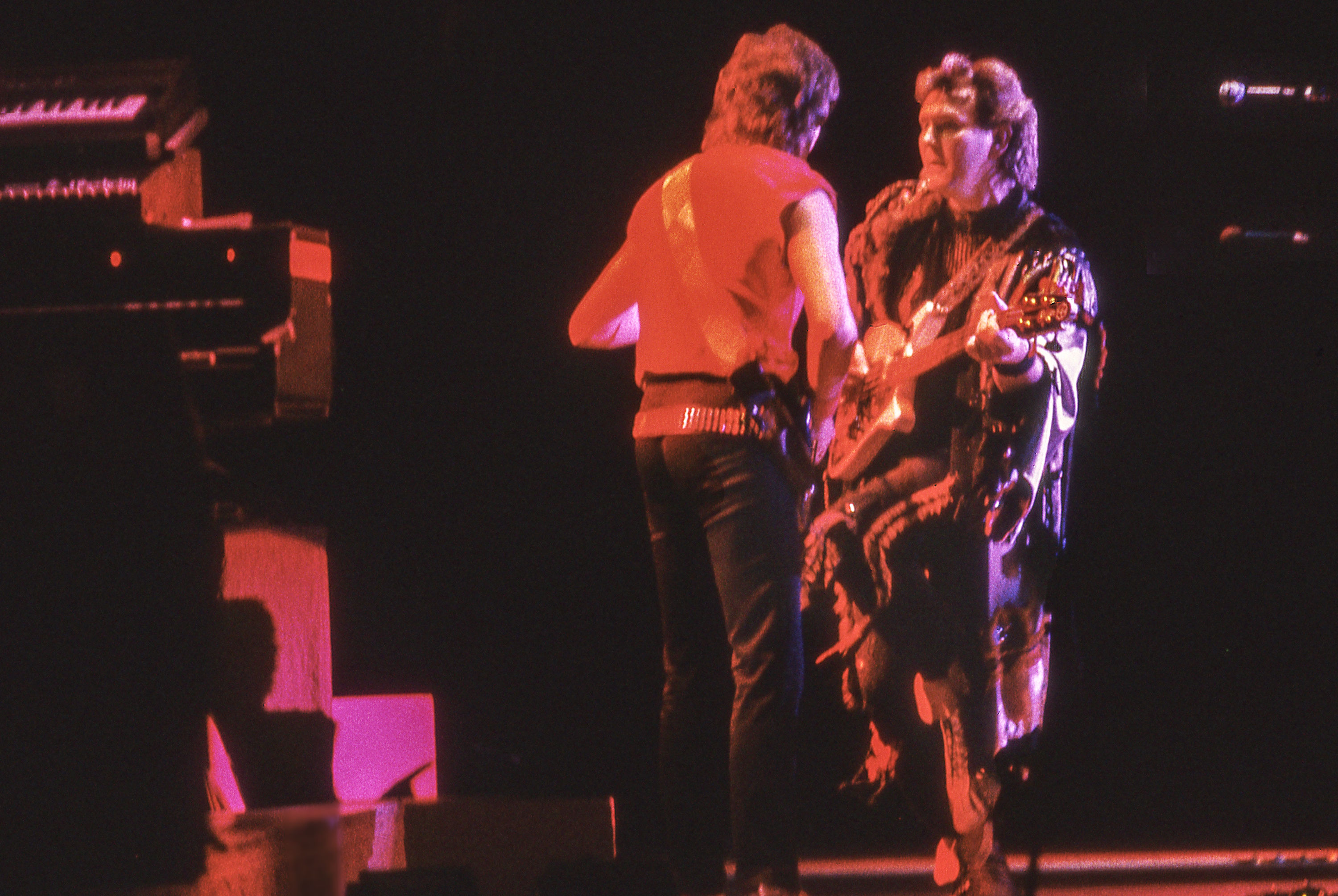
Another would be Atlantic Records’ executive Phil Carson. It was he who had taken a special interest in Squire’s side projects along the way. He had even funded – out of his own pocket – the development project that became Squire’s and White’s new four-piece band in 1982 named Cinema. (Carson had first signed Yes to Atlantic for their 1971 third record, the Yes Album, after the commercial failure of their first two records. And he continued to keep Squire under his careful eye, even after Yes had lost their Atlantic record contract in 1981.) And, of course, Cinema would incubate and grow the music of 90125 before the mid-‘80s Yes was even a glimmer in anyone’s eyes.
A third would be 90125’s producer, Trevor Horn, the one-album Yes vocalist who had had a decidedly rough go as lead singer during the Drama tour. (That so-ironically named album was the same project which had triggered vocalist Anderson’s departure. And Horn had found he had a mighty big vocal role to fill. Word has it that he had often been drubbed about both his less-than-rock-god appearance and his voice by fans and critics during that tour. Helluva way to find out that being a front man isn’t your gig, eh?)
With his keen awareness of musical trends and new studio technologies – such the Fairlight CMI sampling synthesizer, MIDI interfaces and the Linn Drum Machine – Horn, however, would eventually play a crucial sounding board for the musicians moving forward.
In that general period, Horn had been producer for several popular artists, including the British pop groups Dollar and Frankie Goes to Hollywood, and singer Grace Jones. And roughly coinciding with his starting to work with Yes again, he had also become a member of the innovative ‘80s electronica group, Art of Noise, known for their arresting use of Fairlight sampling. In time, when he’d committed to become Cinema’s producer in 1982producer in 1982, he’d bring all of his recent experience and electronic chops with him. So Horn played an essential role as the sonic architect of the next Yes era.
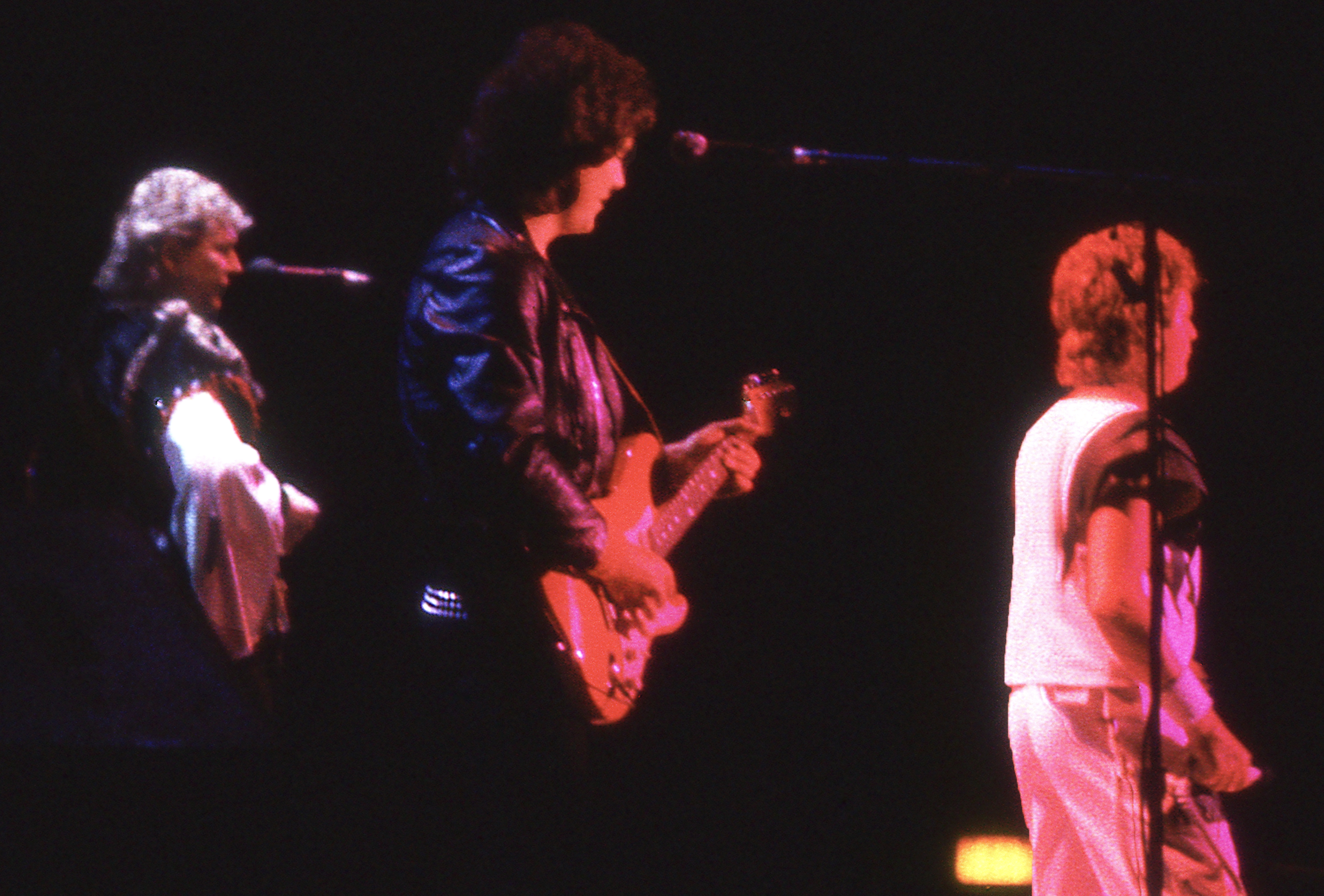
But most crucial of all in the birth of 90125 would have to be South African guitarist/keyboardist/vocalist Trevor Rabin. After all, he was the songwriter who landed in the laps of Squire and White with a clutch of new songs and a hot guitar in hand. And he was thirsty for a new challenge. Truly, without Rabin and his songs, 90125 – as we know it – would simply have not existed.
An established and respected musician/songwriter with several albums under his belt at the time, Rabin was a highly eclectic and versatile rock guitarist who had come to the attention of longtime Yes cheerleader Carson in 1982. Having come from the successful band Rabbitt in his native country of South Africa and as an impressive solo artist, he first migrated to the UK music scene in 1978 with a head of steam behind him.
For a time, Rabin had been actively casting about for solo record development deals in the UK and the U.S., plus taking on production projects, with British artists. Meanwhile, Rabin had also entertained joining other prog heavyweights as a group member. And he had some notable near-misses.
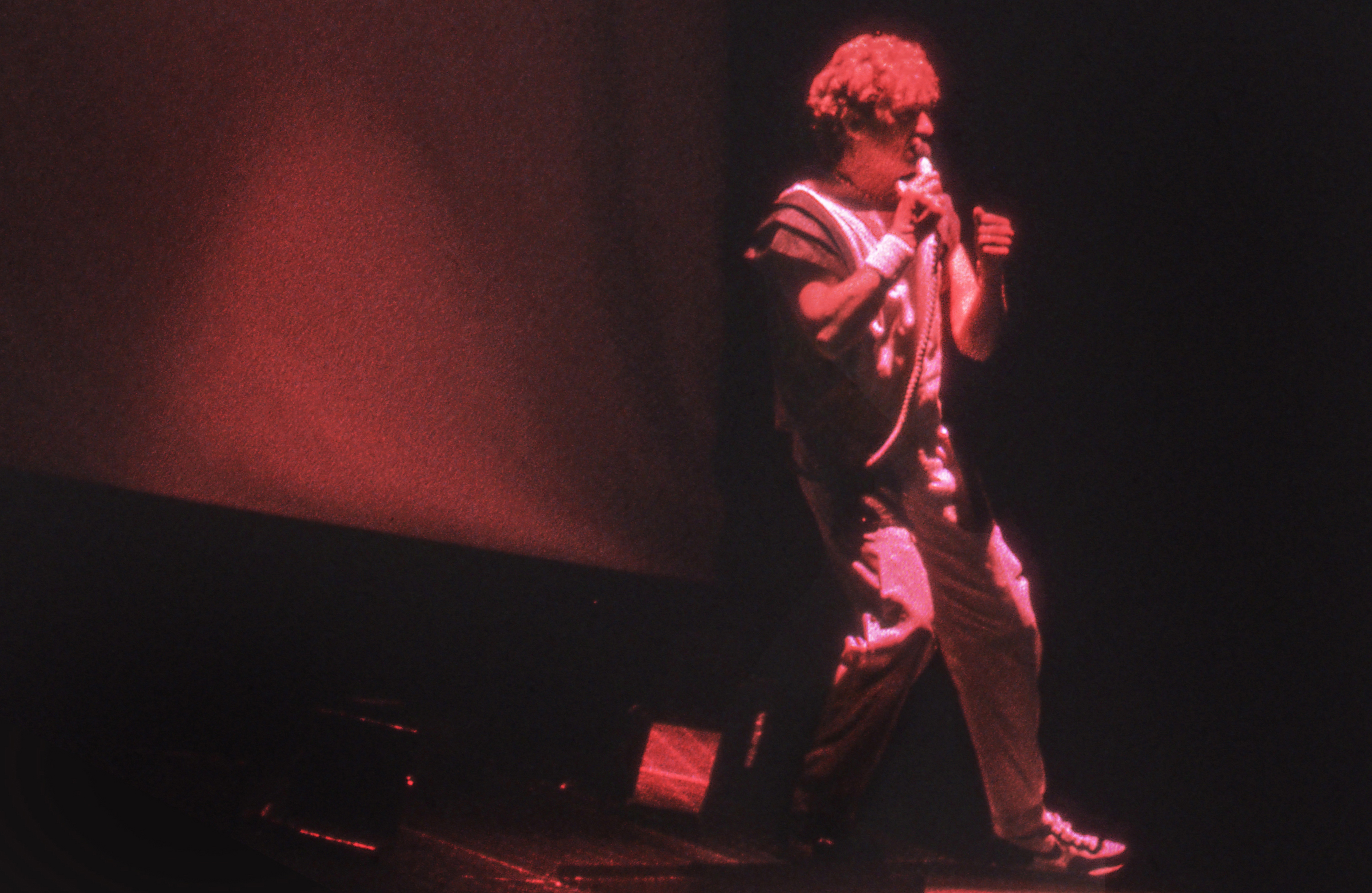
For example, Rabin rehearsed briefly with the newly-forming prog-pop band Asia, with Howe and Downes soon after their exit from Yes in 1981, but had felt it was not quite the right fit. Following that, he also pondered signing on with a new supergroup with über-prog keyboardist Keith Emerson of ELP and Cream bassist/vocalist Jack Bruce, but, once again, no cigar. (Imagine what that might have sounded like!) So he was definitely on the rise and being seen as the musical equal to all these heavy hitters.
Meanwhile, Rabin had landed an ill-fated solo development deal with Geffen Records. After the guitarist had done several months of work on new demos and bailed on the Asia project, Geffen abruptly terminated their deal with him. But Rabin redoubled his efforts of sharing the best of his demos with more prospective labels. As he has explained many times, a big reason for his holding out was that he believed that his break as a solo artist would soon come and be more to his liking.
“You’ve got to want to succeed. . .”
One of Rabin’s demo tracks which sometimes drew positive attention was “Owner of a Lonely Heart”, an older song in his stash that he had first banged out on his guitar in a very resonant bathroom in 1979. (This hook-y and propulsive pop-rock song with a big sound first drew compliments from Ron Fair, an executive with RCA Records, but no offer. It had even been turned down by the usually sharp-eared Arista Records President Clive Davis, who had told Rabin he thought the musician had a good voice but felt that the song was “too left-field” to be a hit.) Unruffled, Rabin persisted and finally found fertile ground when Atlantic’s Carson heard the demos and then, in turn, introduced Rabin to Squire in 1982.
Squire was said to be struck immediately by the strength of Rabin’s songs and to be eager to form a new group with him and White as equal partners. As the story goes, no one intended for this to be a new version of Yes. And it was not the solo deal that Rabin had imagined, but it would finally be a group project with chemistry that felt right to him. And the strongest of these demo’ed songs – “Owner”, “Hold On” and “Changes” – were all original Rabin compositions that would, in finished form, eventually carry the first half of 90125.

Another powerhouse Rabin song written with the group – the killer, metallic arena-rock number with a grinding bass line, “City of Love” – would anchor the second half of the album. With lyrical input from Anderson, “Love” was like the other songs: Strong, hook-laden and modern tuneage that still strutted its proggy stuff, without noodling or filler. Whatever Rabin didn’t write outright among the album’s nine songs still provided with him co-writing credits, such as the layered vocal tour-de-force “Leave It” and the uplifting, five-man-written power ballad “Hearts”. An equal partner, indeed! So he was just the kick up the jumper that Squire and White had been looking for. And it was just as good for him.
*********************************
Coming up in Parts II & III: The push to finish 90125 and the rollout of the 9012 Live tour.
This three-part series is “Dead-icated” to the memory of Joseph Stercz, of Cincinnati, Ohio, a true fellow astral traveler who loved Yes, even when I was ‘he of little faith’. And, of course, we must never forget the late, great Chris “Fish” Squire, the trail-blazing Yes bass master who unleashed the lightning.





